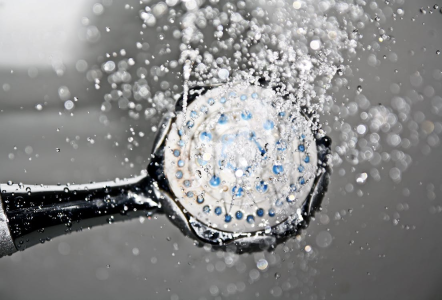Gas, electric or solar: Which one is really best for your hot water system?
By
Maan
- Replies 1
Choosing a new hot water system might sound simple—until you realise how many options are on the table.
From energy sources to environmental impact, the decision can affect more than just your next utility bill.
Here’s how the debate between electricity, gas, and solar is heating up in Australian homes.
When homeowners considered updating their hot water systems, the decision often came down to electricity, gas, or solar power.
Each option carried its own mix of benefits and drawbacks—impacting running costs, installation complexity, energy efficiency, and environmental footprint.
Although electric or solar-powered systems tended to be the go-to for many Australian households, gas-based systems still served a purpose in certain settings.
Types of Electric Hot Water Systems
Electric systems were available in three main forms: resistive storage, heat pumps, and instantaneous units.
Standard resistive systems functioned like a large electric kettle, using an element inside a tank to heat water.
Heat pumps offered higher efficiency by capturing ambient heat from the air to warm water, similar to how fridges and air conditioners worked.
Instantaneous systems heated water only when needed but required significant electrical input—often demanding high-current wiring or even three-phase power.
Pros of Electric Systems
Electricity prices, while high, were expected to fall due to an increasing share of renewables.
Cons of Electric Systems
Gas Hot Water Systems
Gas models were also divided into storage tanks and instantaneous systems.
Storage systems kept hot water ready in a tank, while instantaneous systems heated on demand.
Pros of Gas Systems
Cons of Gas Systems
Solar Hot Water Systems
Solar systems collected sunlight through rooftop panels, heating water that was then stored in a tank.
These setups included a booster—either electric or gas—for cloudy days or when usage exceeded solar capacity.
Despite low ongoing costs, solar systems could become expensive to maintain or if their booster was activated frequently due to limited solar input.
Without regular monitoring, households sometimes only realised via a large bill that their water had mostly been heated by gas or electricity.

Running Costs and Environmental Impact
Running expenses were largely determined by the system type, energy source, and whether it was a storage or on-demand unit.

Sustainability Victoria provided typical annual running costs and greenhouse gas emissions for homes using 90–150L of hot water daily in Melbourne.

Figures varies by location, household size, local energy rates, and renewable energy penetration in the electricity grid.
Switching from Gas to Electric
A growing number of households began transitioning away from gas appliances, including hot water systems.
This movement stemmed from environmental concerns, rising gas prices, and the long-term savings offered by solar-powered electricity.
Disconnecting entirely from gas infrastructure also eliminated daily supply charges.
For homes already using electric cooking and heating, replacing a gas hot water unit with a heat pump or electric model made economic and environmental sense.
However, switching wasn’t always straightforward—instantaneous gas systems could be hard to replace due to space or power limitations, especially in apartments.
Incentives were available in some states to encourage upgrades, particularly to heat pumps and solar models.
Reducing Hot Water Costs
Aside from upgrading systems, Australians could cut costs by reducing water use:
For more guidance, state and federal government websites offered tools to find rebates and plan energy-efficient upgrades.
In a previous story, we looked at how homeowners are making the switch from gas to electric and seeing real savings.
It’s part of a growing trend that’s reshaping how Aussies think about energy at home.
If you’re considering a change, it’s worth seeing what others have done—read more here.

With energy prices and environmental concerns shaping household choices, which hot water system do you think makes the most sense today? Let us know your thoughts in the comments.
From energy sources to environmental impact, the decision can affect more than just your next utility bill.
Here’s how the debate between electricity, gas, and solar is heating up in Australian homes.
When homeowners considered updating their hot water systems, the decision often came down to electricity, gas, or solar power.
Each option carried its own mix of benefits and drawbacks—impacting running costs, installation complexity, energy efficiency, and environmental footprint.
Although electric or solar-powered systems tended to be the go-to for many Australian households, gas-based systems still served a purpose in certain settings.
Types of Electric Hot Water Systems
Electric systems were available in three main forms: resistive storage, heat pumps, and instantaneous units.
Standard resistive systems functioned like a large electric kettle, using an element inside a tank to heat water.
Heat pumps offered higher efficiency by capturing ambient heat from the air to warm water, similar to how fridges and air conditioners worked.
Instantaneous systems heated water only when needed but required significant electrical input—often demanding high-current wiring or even three-phase power.
Pros of Electric Systems
- Could be run using renewable electricity such as rooftop solar or green power.
- Heat pumps provided strong energy efficiency and were eligible for government rebates.
- Storage systems worked well for homes with solar PV setups, particularly when paired with timers or diverters.
Electricity prices, while high, were expected to fall due to an increasing share of renewables.
Cons of Electric Systems
- Resistive models were inefficient unless operated using cheap off-peak power or daytime solar.
- Instantaneous units consumed a lot of electricity and might need to be installed at each outlet.
- Systems still required maintenance, such as valve checks and replacing sacrificial anodes to prevent tank corrosion.
Gas Hot Water Systems
Gas models were also divided into storage tanks and instantaneous systems.
Storage systems kept hot water ready in a tank, while instantaneous systems heated on demand.
Pros of Gas Systems
- Instantaneous gas systems suited small households or separate areas like granny flats.
- Gas pricing wasn’t time-dependent, which made usage more flexible.
Cons of Gas Systems
- Being a fossil fuel, gas wasn’t renewable and had ongoing health and environmental concerns.
- Pilot flames in storage units ran continuously, wasting energy.
- Indoor installations needed proper ventilation to avoid carbon monoxide and nitrogen dioxide buildup.
- Regular servicing was necessary to ensure safe operation.
Solar Hot Water Systems
Solar systems collected sunlight through rooftop panels, heating water that was then stored in a tank.
These setups included a booster—either electric or gas—for cloudy days or when usage exceeded solar capacity.
Despite low ongoing costs, solar systems could become expensive to maintain or if their booster was activated frequently due to limited solar input.
Without regular monitoring, households sometimes only realised via a large bill that their water had mostly been heated by gas or electricity.
Running Costs and Environmental Impact
Running expenses were largely determined by the system type, energy source, and whether it was a storage or on-demand unit.
Sustainability Victoria provided typical annual running costs and greenhouse gas emissions for homes using 90–150L of hot water daily in Melbourne.
Figures varies by location, household size, local energy rates, and renewable energy penetration in the electricity grid.
Switching from Gas to Electric
A growing number of households began transitioning away from gas appliances, including hot water systems.
This movement stemmed from environmental concerns, rising gas prices, and the long-term savings offered by solar-powered electricity.
Disconnecting entirely from gas infrastructure also eliminated daily supply charges.
For homes already using electric cooking and heating, replacing a gas hot water unit with a heat pump or electric model made economic and environmental sense.
However, switching wasn’t always straightforward—instantaneous gas systems could be hard to replace due to space or power limitations, especially in apartments.
Incentives were available in some states to encourage upgrades, particularly to heat pumps and solar models.
Reducing Hot Water Costs
Aside from upgrading systems, Australians could cut costs by reducing water use:
- Shorter showers.
- Water-efficient fittings.
- Using dishwashers instead of hand washing.
For more guidance, state and federal government websites offered tools to find rebates and plan energy-efficient upgrades.
In a previous story, we looked at how homeowners are making the switch from gas to electric and seeing real savings.
It’s part of a growing trend that’s reshaping how Aussies think about energy at home.
If you’re considering a change, it’s worth seeing what others have done—read more here.
Key Takeaways
- Electric, gas, and solar hot water systems each had different costs, efficiencies, and environmental impacts.
- Electric systems—especially heat pumps—were efficient and worked well with solar power, but needed regular maintenance.
- Gas systems were reliable but less sustainable and required proper ventilation and servicing.
- Solar systems offered low running costs but could be costly to install and relied on boosters in low sunlight.
With energy prices and environmental concerns shaping household choices, which hot water system do you think makes the most sense today? Let us know your thoughts in the comments.








